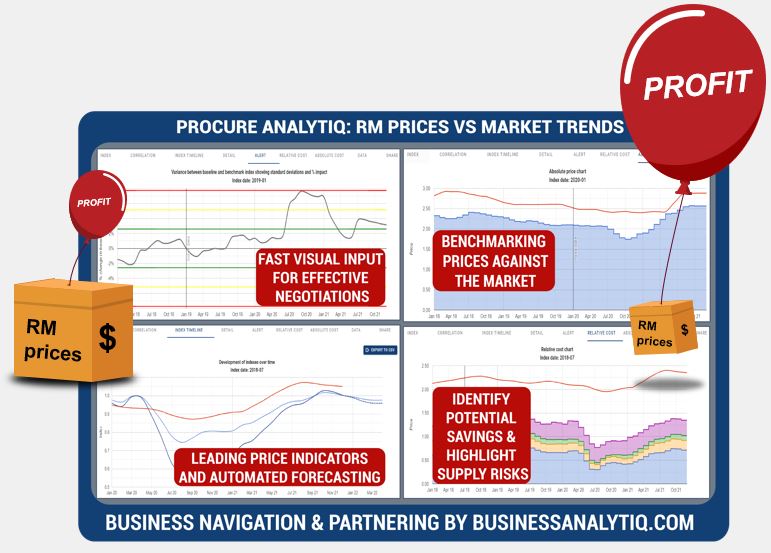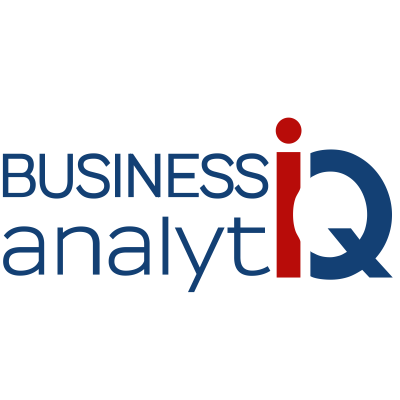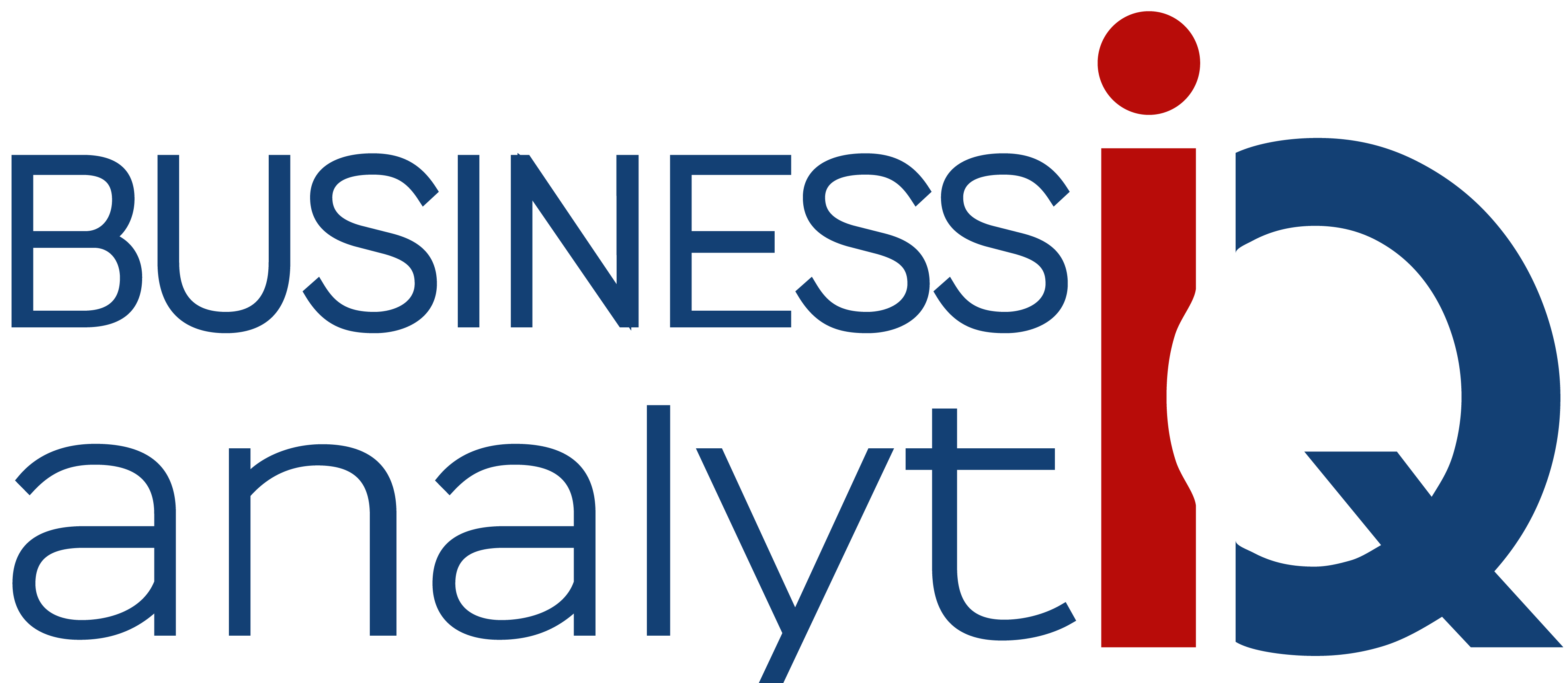Ethylene Glycol price April 2024 and outlook (see chart below)
- North America:US$0.53/KG, -1.9% down
- Europe:US$0.57/KG, unchanged
- Northeast Asia:US$0.62/KG, -1.6% down
- Middle East:US$0.48/KG, -2% down
Business Analytiq assumes no responsibility or liability for any errors or omissions in the content of this site. The information contained in this site is provided on an “as is” basis with no guarantees of completeness, accuracy, usefulness, fitness for purpose or timeliness.
Ethylene Glycol price index
This post is a summary of the global ethylene glycol price developments. The price developments of global ethylene glycol are expressed in US$ prices converted FX rates applicable at the time when the price was valid. Ethylene glycol price index developments are calculated from multiple separate sources of data to ensure statistical accuracy.
The outlook for global ethylene glycol prices, on the second tab, is generated from different inputs including:
- Very recent price developments of immediate cost drivers of global ethylene glycol prices
- Recent price developments of underlying feedstocks which drive the price of ethylene glycol
- Market futures for both cost drives and feedstocks of global ethylene glycol prices
- Adjustment of current supply/demand imbalances in the ethylene glycol market
- Longer term trends in likely demand conditions
Further information on the Ethylene Glycol price chart
What is Ethylene glycol
Ethylene glycol is a clear, colorless, and virtually odorless liquid that is widely used in a variety of industrial applications, including as an antifreeze and coolant in automobiles and airplanes. It is also used as a solvent in the production of plastics and other products. Ethylene glycol is toxic if ingested and can cause symptoms such as nausea, vomiting, and difficulty breathing if inhaled. Prolonged skin contact can also cause irritation. It is important to handle ethylene glycol with caution and to use it in well-ventilated areas to avoid inhaling vapors.
How is Ethylene glycol produced
Ethylene glycol is produced by the hydration of ethylene oxide, which is obtained from the partial oxidation of ethylene. The process begins by reacting ethylene with oxygen and steam to produce ethylene oxide, which is then reacted with water to produce ethylene glycol.
The reaction of ethylene oxide with water is typically carried out in the presence of an acid catalyst, such as sulfuric acid, to increase the rate of the reaction. The resulting mixture contains a mixture of ethylene glycol and water, which is then purified to produce a pure product.
There are several different methods that can be used to purify ethylene glycol, including distillation, fractional crystallization, and reverse osmosis. The specific purification method used will depend on the desired purity of the final product and the intended use of the ethylene glycol.
What is Ethylene glycol used for
Ethylene glycol is a versatile chemical that has a number of industrial uses, including as an antifreeze and coolant in automobiles and airplanes. It is also used as a solvent in the production of plastics and other products, such as resins, fibers, and films.
In the automotive industry, ethylene glycol is used as a coolant in internal combustion engines to help regulate the temperature of the engine. It is also used as an antifreeze to prevent the cooling system from freezing in cold weather.
Ethylene glycol is also used in the aerospace industry as a deicing agent for aircraft. It is sprayed on the wings and other exposed surfaces of the aircraft to prevent ice from forming and to remove any ice that has already formed.
In addition to these uses, ethylene glycol is also used as a raw material in the production of other chemicals, such as polyester resins, explosives, and hydraulic fluids. It is also used as a humectant in the tobacco industry and as a moisture-absorbing agent in products such as air fresheners and dehumidifiers.
What types of Ethylene glycol are there
There are several different types of ethylene glycol, including:
Monoethylene glycol (MEG)
This is the most common type of ethylene glycol and is used in a wide range of applications, including as an antifreeze, coolant, and solvent.
Diethylene glycol (DEG)
This type of ethylene glycol is used as a solvent and as a raw material in the production of other chemicals, such as polyester resins, explosives, and hydraulic fluids.
Triethylene glycol (TEG)
This type of ethylene glycol is used as a solvent and as a humectant in the tobacco industry. It is also used in the production of polyester resins and other chemicals.
Polyethylene glycol (PEG)
This is a group of compounds that are made by polymerizing ethylene glycol. Polyethylene glycols are used as lubricants, surfactants, and in the production of plastics and other products.
Each type of ethylene glycol has its own unique properties and is used in specific applications based on those properties. For example, monoethylene glycol is used as an antifreeze and coolant because it has a relatively low freezing point and a high boiling point, while polyethylene glycol is used as a lubricant because it has low toxicity and good lubricating properties.
How big is the Ethylene glycol market
The global market for ethylene glycol is quite large and is expected to continue growing in the coming years. According to a market research report from Mordor Intelligence, the global ethylene glycol market was valued at around $22.7 billion in 2019 and is expected to reach a value of $34.1 billion by 2024, at a compound annual growth rate of 7.9% during that period.
Ethylene glycol is used in a wide range of industrial applications, including as an antifreeze and coolant in the automotive and aerospace industries, as a solvent in the production of plastics and other products, and as a raw material in the production of other chemicals. The demand for ethylene glycol is driven by a number of factors, including population growth, economic development, and the increasing use of plastics and other products that require ethylene glycol as a raw material.
The Asia-Pacific region is the largest market for ethylene glycol, accounting for more than half of global demand. China is the largest producer and consumer of ethylene glycol, followed by the United States and Western Europe.
Further information
- Wikipedia for general, history, production and usage information
- PubChem for chemistry and property information
According to https://oec.world/ :Ethylene glycol (ethanediol) are the world’s 436th most traded product.
In 2020, the top exporters of Ethylene glycol (ethanediol) were Saudi Arabia ($1.74B), United States ($968M), Kuwait ($671M), Chinese Taipei ($652M), and Canada ($638M).
In 2020, the top importers of Ethylene glycol (ethanediol) were China ($3.61B), Turkey ($281M), United States ($259M), India ($208M), and South Korea ($198M).
Business Analytiq
BE THE FIRST TO SEE RISK AND OPPORTUNITY!
BusinessAnalytiq provides unlimited market trend data and an online tools to track market developments, key benchmarks & leading indicators.
BusinessAnalytiq leads to price visibility, better negotiations, easier budgeting and forecasting, lower raw material prices, and improved better internal and external communication. BusinessAnalytiq will decrease risk and higher profit.

Where does the data come from?
- The source of the data are exclusively public non-confidential sources. We have no access to primary data
- This the index trend of the price trend of the "product category" in general, and not a single specification of the product in particular
- The data is a combination of contract and spot pricing
- Our algorithms are set up to eliminate significant product mix impact on the reported price
- We combine public publications, import/export records, trading prices, company announcements, magazine articles, tweets, and other sources of ad-hoc public information.
- The chart shows the our best approximation of the market trend based on our algorithm interpretation of the signals
- For most indexes we have multiple sources and we focus on using statistically-correlated sources
- As a function of our automation, it is likely that recent trends will be adjusted as we discover more information. So, for example, the price trend for February 2024 will be first calculated in February 2024 and adjusted in March, April and May 2024.
- We will update the data trend as more information becomes available, and this means that recent trends will always be adjusted as we get more data available
- The algorithm will regularly revise our understanding of market trends, and indicated market trends may change
- The data is presented in US$. The UOM of measure is shown in the Index list table
- Our automated software and we do our best to create an accurate representation of the trend
Where does the data NOT come from?
- We do not purchase data from any other source and republish it.
- We will not purchase data from any other source and republish it
- We do not extrapolate trends, even for the forecast. We look for other market signals and leading indicators
What data should our company use?
- If you are making decisions driving significant share of profit, we always recommend that you buy data from the companies who invest in direct primary market access such as ICIS, amongst many others
- Our data, at best, represents an estimate of the market trend based on public information
- We have no direct access to the market, and we do not interview suppliers and customers
- Our automated analysis tools in the online software are set up to combine our data with other sources of data
- We do not recommend that you use our data for direct price mechanisms, as we may change and improve the data trends over time, including historical data
What does the quality indication in the main menu mean?
- Quality level A: Data is from a reliable and confirmed source
- Quality level B: Data is from multiple credible sources and there are no major statistical inconsistencies between them
- Quality level C: Data is from multiple credible sources and there are some statistical inconsistencies between them
- Quality level D: Data is from a single credible source, but we cannot verify the data
- Quality level E: Data is either:
- From a single source, which we consider reliable, but we cannot verify the data.
- From 2 or more sources which have some periods of contradicting trends.
- Quality level F: Data is from a single source which we consider indicatively correct, but the data is anecdotal and we cannot verify the data.
What are the disclaimers?
- We assume no responsibility or liability for any errors or omissions in the content of this site.
- The information is provided on an “as is” basis with no guarantee of completeness, accuracy, usefulness, fitness for purpose or timeliness.
- By their nature, outlooks are always uncertain
How often do we update the data?
- We aim to update the data series on the 9th and 24th of each month (but we do not always make it for each chart)
- The data for the current month and recent history are fine-tuned over time.
What are we doing to improve the data?
- We are continually improving our data collection and processing methods
- Pricing data will be updated from time to time as we improve the accuracy
- We are reviewing all data sources in the first half of 2024.
- There will be continuous fine-tuning of the trend and forecast algorithm as part of that.
- The key focus in 2024 is to add many additional indexes
How can i give feedback on the data or request for new indexes
- Feel free to contact us if you have a specific request. You can reach us via the Contact us page

